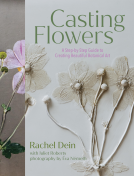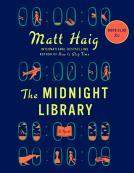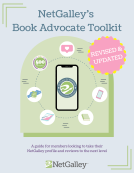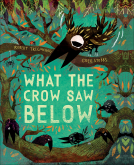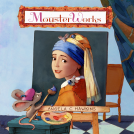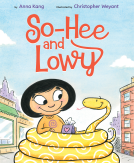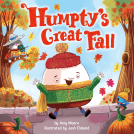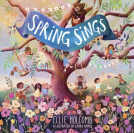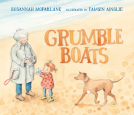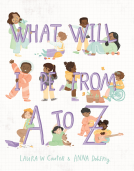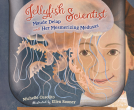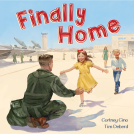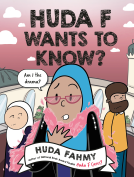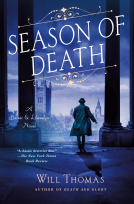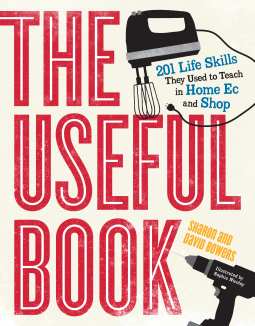
The Useful Book
201 Life Skills They Used to Teach in Home Ec and Shop
by David Bowers; Sharon Bowers
This title was previously available on NetGalley and is now archived.
Send NetGalley books directly to your Kindle or Kindle app
1
To read on a Kindle or Kindle app, please add kindle@netgalley.com as an approved email address to receive files in your Amazon account. Click here for step-by-step instructions.
2
Also find your Kindle email address within your Amazon account, and enter it here.
Pub Date Jun 14 2016 | Archive Date Jun 14 2016
Description
A modern and energetically designed encyclopedia of DIY with everything you need to know to roll up your sleeves and cook it, build it, sew it, clean it, or repair it yourself. In other words, everything you would have learned from your shop and home ec teachers, if you'd had them.
The Useful Book features 138 practical projects and how-tos, with step-by-step instructions and illustrations, relevant charts, sidebars, lists, and handy toolboxes. There’s a kitchen crash course, including the must-haves for a well-stocked pantry; how to boil an egg (and peel it frustration-free); how to grill, steam, sauté, and roast vegetables. There’s Sewing 101, plus how to fold a fitted sheet, tie a tie, mop a floor, make a bed, and set the table for a formal dinner.
Next up: a 21st-century shop class. The tools that everyone should have, and dozens of cool projects that teach fundamental techniques. Practice measuring, cutting, and nailing by building a birdhouse. Make a bookshelf or a riveted metal picture frame. Plus: do-it-yourself plumbing; car repair basics; and home maintenance, from priming and painting to refinishing wood floors.
Available Editions
| EDITION | Other Format |
| ISBN | 9780761171737 |
| PRICE | $19.95 (USD) |
Featured Reviews
YES! This is a must have for every insecure homeowner, first time renter, or college student. I would buy this for many friends and family and would imagine anyone checking it out at the library would also need to buy a copy. fantastic and very handy as home reference.
 Douglas W, Reviewer
Douglas W, Reviewer
I am always looking for great tips and hints about all aspects of my, whether in print form or online, so when I saw The Useful Book pop up in my list of possible reviews I grabbed it immediately. I was expecting some great ideas within its covers, but it quickly had me thinking more deeply than that.
At 52 years old, I still remember a high school where we all had to take 1 quarter of Home Economics and Shop during our high school career. I was very non-traditional for the mid-1970’s though, finding Home Ec much more enjoyable than shop class, but I still remember being thankful for the exposure to both power tools and the basics of cooking.
As I have raised my own son over the last 17 years, I noticed and bemoaned the lack of instruction in the various “life skills” we all need as we grow older. Gone are lessons in making our own meals, replaced with AP Government and AP Algebra. That’s not to say I don’t think those subjects are important, but, for me, balance is important in all aspects of life. This is why I have made a point of helping my son learn about life in a variety of ways, from how to pay bills each month (and how much it costs for groceries) to cooking, home repairs and all the little things he will need to know as he reaches adulthood.
This is where The Useful Book really struck home for me. My son is about to head off to college and I immediately saw this book as the “Missing Manual” to life on your own. I plan on making sure he has a copy in his boxes whenever he moves out and takes the first steps in his adult life and I would recommend you do the same. Everyone needs a great starter guide to life on their own, and The Useful Book is perfect for that.
Do you have a Senior about to graduate High School, too? Sure, you can send them a nice fat check for a graduation present, but you might want to stash it inside a copy of this book.
The tips and hints in The Useful Book range from cooking, sewing, domestic arts, to repairs and simple building projects to the basics of plumbing and electricity -- just about every aspect of adult life They are presented in clear and complete language and enhanced by tons of graphics throughout. The section on Laundry alone is enough to recommend the book. I am sure we all remember that first time of having to wash our own clothes and the sometimes disastrous results. Why not give you child a head start in that department and help prevent a batch of white clothes that suddenly turn blue or pink in the wash.
The book design is great for use as a research book when you REALLY need some information, but can also be scanned or read as its own personal Home Economics and Shop class -- for those who never experienced it. I plan on keeping my own copy around the house, too. You never know when you might need a reminder of how to “Remove Gum From A Rug” or “How to Patch a Hole in a Wall.”
I liken The Useful Book to another very useful book I was given as a wedding gift -- The Joy of Cooking, Sure, the recipes and techniques in JOC aren’t exactly gourmet or cutting edge, but when I have needed a reminder of how to best cook polenta or make a basic cake from scratch, it was always where I turned first. Your kids aren’t going to want (or be too embarrassed) to call you when little problems pop up in their lives, so why not give them a useful and comfortable life reference they can use to solve their most basic problems.
Parenting is all about education and The Useful Book is an educational gift that keeps on giving, long after your children leave the nest and start building lives of their own. Like many parental lessons, your kids might find a gift of The Useful Book a bit embarrassing at first, but I can guarantee you they will refer to it again and again -- and be extremely grateful of your gift -- for a long time to come.
 Barbara T, Librarian
Barbara T, Librarian
Everyone at one time or another needs to learn the basics of keeping house and taking care of themselves as an adult. Unfortunately, for many people, there parents have not been able or have not attempted to teach them these vital skills. The Useful Book is definitely what these new adults need. I have recommended purchase of this title for our library system as I think this generation really needs something they can refer to when they feel too dumb to ask someone. A great idea! I will buy it for gifts, too!
 Reviewer 312499
Reviewer 312499
I had alternating semesters of home economics (cooking and sewing) and industrial arts (woodworking) from fifth grade through eighth grade – before school became all about preparing for college. I’m a proficient cook, seamstress, and laundress. I painted the interior of my own home, hung my own paintings, curtains and shelving, built my own bookcases and repaired my own toilet. I even maintain my own bicycles. But there was still so much covered in this book that I didn’t know how to do! Some of it, I’m not sure I’ll ever need to know how to do. Some of it, I most definitely need to know.
Right off the bat, I turned to Task #187 How to Change a Windshield Wiper Blade. I hate to admit it, but I’ve been driving around in New England winter weather (albeit a nice mild winter) with a shredded driver’s side wiper blade because I couldn’t figure out how to get the darn thing off the car. There were three clearly written steps with illustrations. It turns out that the secret was a small tab on the underside of the wiper that holds the blade in place. Ta da! I was able to change my own windshield wiper blades.
The book is divided into sections for different skill sets. Each section begins with a graphic depiction of the necessary “toolkit” for that skill set.
When it comes to cooking, the recommendations for the pantry and the toolkit seem overwhelming. I’ve lived in my house for over fifteen years and have never owned a microwave or a full-sized food processor. I get by just fine with a stove, a toaster oven, a mini-prep, some creativity and a lot of patience. I recently came into possession of an immersion blender, but before that, I was able to accomplish those tasks with a standard household blender. There are quite a few other items in the toolkit that I also still don’t own (like a potato masher and a salad spinner), and a number of items in the pantry that I almost never have in stock. The sewing toolkit seemed to be right on the mark, especially since the sewing machine was labeled optional. The laundry toolkit had a few unexpected items, especially chalk and glycerin, but after reading the stain removal task, the addition of those items made a whole lot of sense. The cleaning and housekeeping toolkit was spot on! The domestic repair toolkit seemed to have a lot of stuff in it, but on closer examination I already had most of it on hand in my own personal toolbox. A voltage detector seems a little excessive for a domestic repair toolkit; then again, I have no intention of messing around with electrical repairs. I can’t render an opinion on the woodworking and metalworking toolkits because I am not very familiar with those realms, but I did appreciate the caveat that the hand tools alone were sufficient for woodworking. I also really appreciated the depth of description for each woodworking and metalworking tool, which could easily function as a shoppers’ guide if necessary. A propane torch and a few other items also seem excessive for a plumbing repair toolkit but, again, reading the tool descriptions and the tasks, they definitely have their purposes. Aside from a few adjustable wrenches, some duct tape and a drain plunger, I don’t own any of the items in the plumbing toolkit! The electrical toolkit was short and sweet – just four basic items. The graphic for the garage toolkit makes it seem quite extensive, but the description on the following page boils it down to eight essential items plus “miscellaneous tools.” As for the trunk toolkit - I can’t imagine keeping all that equipment in my trunk! Then again, tire changing tools, jumper cables and Fix-A-Flat are the only things that I am certain that I have in my trunk toolkit (and it drives my gearhead ex crazy that I’m so unprepared). The bicycle repair toolkit was dead on.
Each task begins with a brief introduction, usually persuading you why that particular task is important to learn. For the Shop tasks, each task is prefaced by a “tools” and “materials” list, which makes it easy to get organized to perform the task at hand. The tasks are written in short concise steps with big numbers and bold headings so it is simple to follow along with even the longest and most complex task. Within the sections, the tasks are organized to start with the most basic and build up to the most difficult.
Within the cooking section, there is all sorts of good information and recipes sprinkled liberally between the tasks that you wouldn’t know about by looking at the Table of Contents. Who would have known that there was a graphic of all the different types of lettuce? Or a recipe for French Toast Casserole? The recipes in the cooking section were clearly written with standard American measurements and easy to follow instructions. Honestly, if the first 125 pages or so were a stand-alone cookbook, I know several of my friends who would appreciate it!
Within the sewing section, there was less ancillary information, but there is a great explanatory diagram of the parts of the sewing machine. I always wondered what some of those seemingly extra parts did. The tasks themselves were excellent and, like the cooking tasks, built up in complexity. I loved the trick with the tailors’ chalk for placement of the second half of a snap, which was something I did not know. I also appreciated the advice on using white vinegar for getting fabric unstuck from a zipper (which happens to me all the time).
Within the laundry section, I really appreciated the Guide to Universal Home Laundry Symbols, as that has been something that has perplexed me. The majority of the tasks were very basic, although there was a wealth of good information about clothes care to make your clothes last longer that was not necessarily associated with a specific task. It might just convince me to stop doing all my laundry in one load.
Within the domestic arts section, the tasks are also very basic, with some great gems of information tucked in between. I loved the graphic on perfect hospital corners! It was pretty much exactly how I learned how to do it in basic training. The spring cleaning list was also very helpful, as I always mean to do a thorough spring cleaning, but never know how to start – or where to finish!
Within the life skills section, there was an interesting collection of random tasks that I would consider to be just general successful “adulting.” The setting a formal table task was particularly well done with an easy to understand graphic (especially since I always misplace the bread plate). And I was thrilled to see a task about how to pack a suitcase – which was supplemented with excellent advice pre-travel preparation. The advice on the ten big items every wardrobe needs is also spot on, although it is tucked in between two tasks and would otherwise go unnoticed. I constantly write thank you notes, and the formula in the thank you note task is perfect.
Within the domestic repair section, the tasks are widely varied. I’ve actually done several of the tasks myself – and the instructions for the ones that I have done are very well thought out. Some of these tasks I will never attempt. But here are also things around the house that I need to do (like repairing a hole in the plaster wall and re-caulking my bathtub) and I’m confident that I could accomplish them by following the task instructions. The task on how to polish furniture seems like it might be a better fit in the domestic arts section.
Within the woodworking and metalworking section, there is a lot of really good additional woodworking information in between the tasks that doesn’t show up in the Table of Contents. For example, I learned a lot about types of wood and choosing wood from the “Visit to the Lumberyard” subsection. Each task was a small project that taught basic skills necessary to undertake a larger project – that is, the doghouse project was designed to teach the basics of framing and roofing and the spoon ring project was designed to teach the basics of cutting and bending metal.
Plumbing is the currently the bane of my existence. And within the short and sweet plumbing section, I found some answers. My favorite was again something not found in the Table of Contents: a subsection on common toilet repairs that I plan on using to troubleshoot a troublesome toilet as soon as I get back home.
The tasks within the electrical section were intimidating. Working with electricity frightens me. However, the first task about slashing your electrical bill was particularly insightful. And I did enjoy the additional information at the end of the section about “Lighting a Room Like a Pro.”
Within the mechanical section, most of the automotive tasks also seemed too complex for me – except for the aforementioned windshield wiper replacement. The flat tire change task was especially well written and easy to follow – I should keep a copy of it in my glove box AND tucked in with my spare tire! The suggestion to park the car on a white sheet to diagnose the color of the fluid potentially leaking from it was a particularly good one, as was the diagnostic guide that followed the suggestion. The bicycle maintenance tasks were spot on!
Overall, this book reads like cross between Hints from Heloise and You Can Do It!: The Merit Badge Handbook for Grown Up Girls by Lauren Catuzzi Grandcolas, which is one of my hands down favorite how-to books. The Useful Book is informative, easily accessible and even fun. This will likely become one of my new go-to engagement and housewarming presents, along with the batch of cookbooks that I usually give. And I definitely am going to consider it as a top gift giving idea when Christmas rolls around.
 Reviewer 318412
Reviewer 318412
When I saw the cover of this book, it caught my attention quickly. I'm known to have a few tips and tricks up my sleeve for my friends and family, and was curious to what this book would contain. There were a few that I had already known and have used, but there were plenty of unknown tricks that became quite useful when I put it to use when I went on my rotation of cleaning/decluttering, or basically doing life. I was also excited to share a few with my friends, and told them about this book. I think that this is a pretty neat book, and it held my attention as I scour the book for anything new that I wanted to try or even to put to use the next time I used something of sort. I would definitely recommend this book for just about anyone, It's pretty handy to keep around!
I love how this book has everything from Cooking and Laundry to Repairing things to mechanical things with your car! I definitely learned some new things!
 Denise G, Librarian
Denise G, Librarian
I will be buying this book for my children and their friends when they go away to school! I may even buy one for myself! This book gives instructions for the everyday tasks that we take for granted that everyone should know, but might not have had anyone show them how. There are tough jobs, too! Thanks to NetGalley and Workman Publishing for providing this ARC.
A must-have resource for EVERYONE. (5 stars)
Let's face it... for a couple of generations now learning certain skills just hasn't been made a priority here in the US. We thrive on the convenience of paying others to bake and cook, sew and build, clean and repair. Awesome for those who have those skills but shouldn't everyone be able to sew a button or boil an egg?
Thanks to my great-grandparents, grandparents, and parents as well as family friends, aunts and uncles, I learned a lot of the basics in this book like making a bed and basic sewing but there were other skills that no one saw fit to teach me because I was a girl. So I snapped a review copy of this book and spent many nights pouring over it discovering things old and new presented in ways that made sense, ways that I could apply without needing any more knowledge than what was provided within. Many are basics, some are a little more advanced, but all were things I was ecstatic to have learned to do... or at least, have accessible in one place when I needed them.
If you're looking for a fantastic book for a curious tween or teen I would have devoured this enthusiastically at that stage. I think it's an amazing resource to give a new graduate or someone moving into their first apartment/house. Newlyweds. Friend who swears she burns water. Teen who just got their first car. Pretty much anyone and everyone can learn something here and I can't wait to pick up a hardcopy for those times when I really, really don't want to ask my husband to do it or call my father-in-law to ask how something is done. Two very big thumbs up!
 Tracy S, Bookseller
Tracy S, Bookseller
OMG, SO SMART!!
Seriously, everyone should own this book! Would also make a great wedding shower gift! !!
 Reviewer 315837
Reviewer 315837
This basically an encyclopedia for DIY. This book has a little bit of everything from cooking, sewing, building or even repairing it. It gives step by step instructions and illustrations. Overall very helpful on a lot of projects.
 Reviewer 318610
Reviewer 318610
The Useful Book has a vintage design, but all of the advice is modern and incredibly, well, useful. I never had the option to take Home Ec or Shop in high school. Instead we were offered classes like Business Law and Theory of Knowledge. So, I left my formative years being able to explain what a tort is, but I having no idea of how to make a torte.
While my Home Ec skills weren't established in a classroom, I learned how to sew to make my wedding invitations and I love relaxing after a long day at work by cooking and baking. The basic skills I picked up mostly through trial and error. Ok, the sewing came from a class taught by a wonderful women who use to make costumes for movies. What I missed and still regret not learning though, are the basics of home maintenance. Like how to stop my sink from dripping or caulk a bathtub. Which is where The Useful Book comes in. Instead of cuing up a handful of Youtube videos and watching until I understand or trust one, it's easier and faster to grab the book.
The Useful Book should be handed out when you move out or get your first home. There's even a helpful section that lists the basics for your pantry and fridge, along with a "Cooking Toolkit" that covers the basic pots, pans, power appliances, knives, utensils, and misc. equipment you need in your kitchen. It would be ideal to bring with you when registering for your wedding, just to make sure you get the essentials.
If you've never boiled water or maybe you are a little more domestically blessed and just want to know how to get gum out of your rug, regardless The Useful Book is your nonjudgemental guide. It's filled with over 200 life skills and in the few weeks I've had it, I've reached for the hefty tome multiple times. So while my Pinterest boards fill up with DIY projects that I may or may not get around to, I'm now confident I can take care of the basics of my home.
This is a neat book. There are a lot of tips and tricks in it that I didn't know. With that being said, there are also a lot of things I did know. There were also some things that I didn't agree with. That's okay though! That's the beauty of your own opinion. I would recommend this to people who are just moving out of your parents home for the first time. This would really be helpful to some people. Not everyone has the internet on hand 24/7.
 Reviewer 332909
Reviewer 332909
This is an excellent resource for any readers who want to take control and do things themselves. The layout of each page is clean and easy to navigate. Written in simple language with step by step instructions on how to carry out basic everyday tasks. I already knew a lot of the information in here but there were a few tips I was happy to learn and will be putting them to use. I can't speak highly enough of this book. Get a copy as soon as you can. You won't regret it.
I was intrigued by The Useful Book, which has a simple yet neat premise, summed up by the subtitle: 201 Life Skills They Used to Teach in Home Ec and Shop. It's sadly true that practical classes such as shop, home ec, auto repair, and the like have suffered from school budget cuts, right along with many art programs. But in this day and age of Google and, particularly, YouTube, I wondered how the authors, who market this book for ages 8 and up, might attempt to package their material to win over the internet crowd.
I think they did an admirable job. With simple, straight-forward language, lists, drawings, and diagrams, they present more than just how-tos about practical, every day to every-so-often tasks in the following categories: cooking, sewing, laundry, 'domestic arts' (mopping, hanging curtains, getting ink out of carpets), life skillz (tying a tie, setting a fancy dinner table, writing a thank-you note), domestic repair, metal and woodworking, plumbing, electrical, and mechanical.
While providing clear instructions for each task, the book goes a few steps further. Each section starts with a list of items, including images where helpful, one might need on hand to make life easier. Items to have in the pantry, go-to pots and pans, what your basic home tool kit should include, etc...
Additionally, most tasks are then grouped with other relevant information one likely won't find without another internet search. In the "How to Hand Wash" section, the book includes related hints on when to dry-clean and dry-cleaning myths. In the "How to Vacuum" section (easy peasy, right?) you also get good tidbits on trouble-shooting your vacuum, how to vacuum blinds, and whether your vacuum can be used as an air-freshener.
I put the book to two tests. First, I looked at the woodworking section, since that's the area where most of my skills in these areas exists. The toolkit list was fairly extensive, and included items past the beginner level. They were all handy items and not many required much storage space. This section offered sage advice on lumberyards. I was also impressed the authors included the vitally important information that lumber sizing is wonky. Although we all refer to a 2x4 as a 2x4, a 2x4 does not measure 2"x 4". Yeah, as if working with wood wasn't complicated enough. So, well done.
The second test was my favorite nightmare issue: folding the dreaded fitted sheet from the Seventh Circle of Hell. I have watched countless videos on this bastard of a task and unless I lay the sheet out on a hard surface I'm doomed. Even then, I'm fairly inept at it. The videos all go too fast and really don't explain things well. Which corner is corner 3? Does that corner stay inside out or not? Hell if I can tell.
In any event, The Useful Book presents the process in five steps, each with a small diagram and instructions. Here is my result using the book.
This is after putting all the corners together, which I'm fairly certain I did correctly. The directions aren't bad, and I think I was able to follow all the steps correctly. It thankfully explained whether the corners were supposed to be inside out or right-side in while proceeding. But in the end, this is what I was supposed to lay on a flat surface and "straighten":
Which quickly became quite a confusing task. Where do I begin straightening this pocketed mess? 80% of the sheet is up in one "corner":
After some "straightening" ( i.e., semi-randomly pulling on stuff):
And some folding:
I don't necessarily call this a win. It's not as good as the result I had from the last video I watched. However, in defense of the instructions, (1) I was using a fitted sheet that for some god-forsaken reason has elastic all the way around and not just in the corner pockets (wait til I find the sadist who came up with this manufacturing gem), and (2) this really may be the thing I am worst at in life. I think if I had a normal fitted sheet with only elastic on the pockets I might have been better off.
Overall, I thought this was a fun book with lots of good, sensible information. It would be a great gift for kids just heading off to college or someone moving into their own apartment/house.
 Reviewer 213851
Reviewer 213851
This book is a great ans yes *Useful* guide on how to do things in and relating to home ( car and outdoor maintenance and repair are also covered) All sections have more than just how to do things, they include tips, recipes and the like. Great for anyone living on their own for the first time, but also a good guide to have on hand for anyone. You may be able to read a recipe but can you measure properly or do you know what pan to use or how to blanch vegetables?
This book is superb for teens who are going to be going out into the world. It's filled with life hacks that you may not think you need to know, but you totally do. And now I've finally learned how to cut a lemon for garnish! I hope this method also works for my orange wedge for a beer.
People know me as ScrappyMags – a DIY expert. I can refinish a table faster than a speeding bullet. I can wood fill and repair dog-eaten furniture legs in a single bound. But I will confess something embarrassing: My name is Maggie and I am a self-proclaimed moron when it comes to many home-ec topics (Hello Maggie!).
Case in point: I’ve called my mother no less than 10 times in the past year or so to remind me how to hard-boil eggs. Every. Single. Time. My mom? Knows EVERYTHING! However, something sad occurred to me – I won’t always have mom. :( And darn it – I’m an independent woman (Destiny’s Child strong!) so I should be able to complete these simple tasks sans help. There’s some mysterious reason my pea-sized brain isn’t retaining this information (I blame Twitter and the Kardashian garbage stuck in there, kinda’ like the same phenomenon that allows me to reminder every line from Ferris Bueller’s Day Off).
The table of contents in The Useful Book in genius and easy to follow based on general topics (Cooking, Sewing, Domestic Repair, Woodworking, etc.) so it’s easy to find what you’re searching for and hold any and every thing I can possibly think of that a person would need in her home. Then, each section begins with helpful hints, i.e. the ubiquitous “how to” monikers, from boiling water to washing laundry to performing more advanced mechanical repairs. The cooking section includes a list of kitchen staples and a description of different pots/pans, etc. Trust me, I didn’t know what a “Dutch oven” was until I was almost 40, so this can be incredibly helpful to laymen, and fellow self-proclaimed morons like me.
This book is a MUST BUY for:
1. Those moving into their first place after college or high school. Trust me parents, you will save TONS of phone calls and random texts messages!
2. Divorcees or widows/widowers who find themselves cooking, taking care of everything for the first time in a long time. 3. Retirees. When my parents retired, it was a massive adjustment, particularly as they come from a generation where women did most of the household chores. But as my mom had to define to my dad, she didn’t retire to sit home and wait him (you go girl). Dad had to learn the performance of some simple tasks around the house to help out. Curmudgeon is a word that comes to mind. However, he now has “jobs” and it’s good for him. He adjusted.
4. Anyone living solo or with a mate who doesn’t have a handy bone in his/her body. I live solo – this book can be a lifesaver (and money saver) as it shows many simple activities that CAN be completely, easily and with clear directions. Being non-spatially minded, I COMPLETELY applaud this book’s efforts. I see many wrench-clutching happy dances in my living room in the near future.
5. Those who secretly think they know everything but don't and no longer should have to fake it (err, I think we call this "husbands").
Take the “duh” out of “duh-know-how” and buy this book. Save yourselves. Save a loved one. Save your furniture and plumbing from a husband who refuses to read instructions. Save the power level on your phone and useless text messages that cause thumb pain. Now I have to leave as I have a bathtub to caulk, and thankfully a book that explains, simply (THANK YOU), how to do it.
Thanks to NetGalley and Workman Publishing for an ARC in exchange for an honest review.
WELL. This book is an amazingly wrapped package of... well, useful information! Most types of handy tasks, basic cooking and DIY skills, sewing skills - even mechanical tasks! - are there in the pages of this book, waiting for you to better yourself with! And who doesn't like to improve their skillset every now and again?!
I think I'm quite good at carrying out basic tasks...but even on a first flick through this book, it became very apparent that there were loads of tasks that, had I needed to do them on my own, I'd have no flippin' idea how to!
Enter... this book!
The authors Sharon and David Bowers tell you, step by step (and in some cases with pictures - yay!), exactly how to do a tasks which are a range of difficulty levels.
Now I know nowadays you can just google most stuff, but to be honest it's not always clear what's the BEST way to do something. Having it all in a handy book (more like encyclopedia really) feels reliable and more trustworthy to me. Plus, it's all in one place - no internet access needed! Knowing how to fix household items, learn basic plumbing skills, fix a flat bike tyre - it's all come in very handy for me, particularly now I'm a house owner myself!
Some parts probably won't be relevant to me now or in the future, but it covers a great range of tasks and problems, with clear, concise instructions on how to sort them out. This would make a fab present for someone who has just moved into their own place, or is off to uni. Or just someone who's not so practically-minded (which sums up me a lot of the time, to be honest!)
 Donna M, Reviewer
Donna M, Reviewer
This book is very clear on its content just from the title and it really lives up to its name! Its jam packed with helpful hints, tips and ways to do things- probably the only book of this nature you'd need and it covers a massive variety of subjects - easy to follow, well laid out and a good read to boot
 Bianca R, Reviewer
Bianca R, Reviewer
A very good book for younger adults (especially college/university students living alone for the first time). With clear and easy (and most of all short) instructions everything can be handled by yourself from almost everything about jobs done inside and outside the house.
